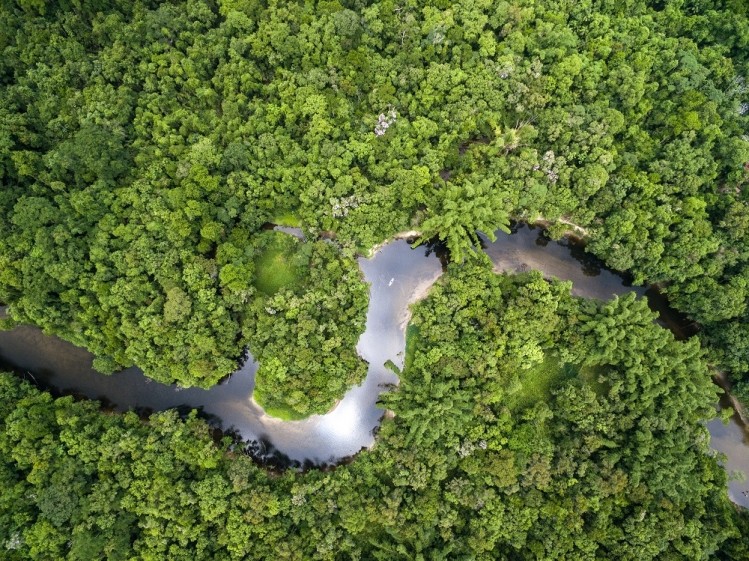A dictionary of useful plants: Brazil can 'contribute enormously' to advancing edible fruit knowledge

Writing in Food Research International, researchers from Brazil's Federal University of Minas Gerais and Federal University of São João del-Rei investigated and reviewed data from the Dictionary of Useful Plants of Brazil and Exotic Cultivated of over 500 of the country's edible fruit species. Published in 1926 by Portuguese botanist Manoel Pio Corrêa, the dictionary, they said, was considered “the most important” piece of work in the field since it covered all Brazilian ecosystems and detailed data on traditional uses of the plants.
“Our main goal was to identify valuable fruit species from Brazilian biodiversity, encourage their direct consumption and promote scientific research aimed in developing food products,” the researchers wrote.
'The most diverse flora of the world'
The review concluded that much more could be learned about Brazil's biodiversity, especially the health benefits associated with its edible fruits.
Just 15% of the 350,000 known plant species in the world had been investigated for their chemical composition so far, the researchers said, and of the 504 Brazilian fruits investigated, just 25% had determined health benefits. But, the researchers said Brazil had the power to change this.
“Brazil can contribute enormously in this field because the country has the most diverse flora of the world, with 33,200 species approximately that corresponds to 26.5% of the total of known species,” they wrote.
“...The Brazilian flora is very rich in edible fruits but only a fraction of this potential is known and properly used.”
The review looked at Brazilian edible fruit species across just 69 botanical families, for example, but the biome of the Atlantic Forest alone contained 348 botanical families.
“Today, agriculture in Brazil is still strongly based on exotic species [such] as sugarcane from the New-Guinea, Ethiopian coffee, Philippine rice and orange from China. However, the vast Brazilian territory grants many other native species that could be used in food and gastronomy but have an unknown potential. There is therefore a necessity to recover information about the native useful plant species to promote their better use.”
This was particularly relevant, the researchers said, amidst the push towards “old eating” habits and a “renewed interest” in plant foods for different tastes and high levels of bioactive substances capable of preventing many diseases.
Prioritizing the most attractive edible fruits
The researchers classified edible fruit species through a high priority index (PI) to draw attention to those of most interest for future commercialization and research efforts. The ranking was based on the sum of attractive sensorial characteristics (sweet, tasty, acidic, fleshy and aromatic) and the number of studies on their bioactive properties (antioxidant, antimicrobial, anti-inflammatory and chemical characterization).
The researchers said 49 of the edible fruit species - 10% of the total recorded plants - had a high priority index (PI). The three Brazilian plant species with the highest PI classification were: cashew (Anacardium occidentale) from the Anacardiaceae family; passion fruit (Passiflora edulis) from the Myrtaceae family; and macaw palm (Acrocomia aculeata) from the Arecaceae family.
“Species with a higher PI should be given priority in programs aimed to encourage direct consumption, as well as scientific research to increase their availability in the market, such as agriculture, post-harvest biology and technology and especially in the development of processed food products,” they wrote.
The researchers said the Myrtaceae, Arecaceae and Anacardiaceae families were all interesting based on the number of edible fruits with high PI values and many had strong potential for use in functional foods.
It was also “interesting to note”, they wrote, that 12 of the investigated edible fruit species were referred to as “attractive specifically for children” - fruits from Myrcia multiflora, for example - which opened up potential opportunities to develop targeted, functional products.
Sustainable use of underexploited species
However, despite Brazil being the world's third-largest fruit producer behind China and India, the researchers said regional commercial production specialized in native fruits remained “scarce”. The main barrier, they said, was the “lack of chemical and bioactivity studies that confirm their benefits as food”.
“Although in this study we have presented data extracted from only one book, it is possible to observe a great potential for Brazilian edible native fruit species, most of them unknown to the population and to science.
“The valorization of biodiversity, through sustainable use of underexploited species, is a way to slow down the erosion of genetic diversity in remote regions. The commercial activities with the fruits can improve income for local populations. We argue that incentives for better use of the species listed in this study, especially those with higher PI, must be considered and they should be included in reforestation programs that are done throughout the country.”
Source: Food Research International
Published online ahead of print, doi: 10.1016/j.foodres.2019.01.058
Title: “Edible fruits from Brazilian biodiversity: A review on their sensorial characteristics versus bioactivity as tool to select research”
Authors: N. Teixeira et al.






